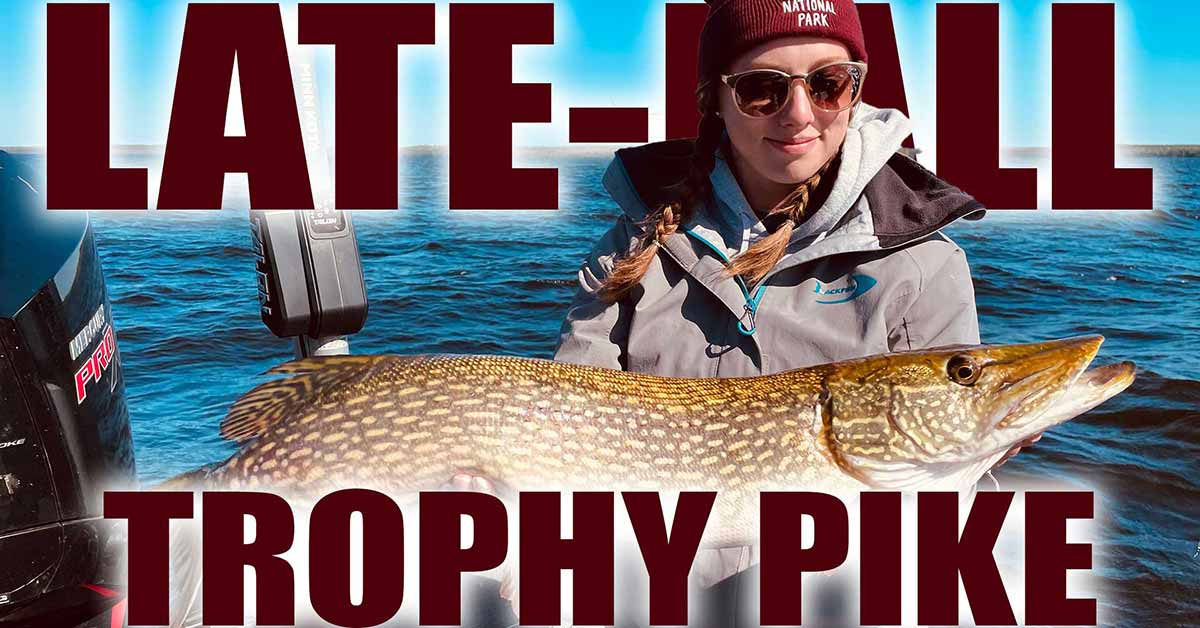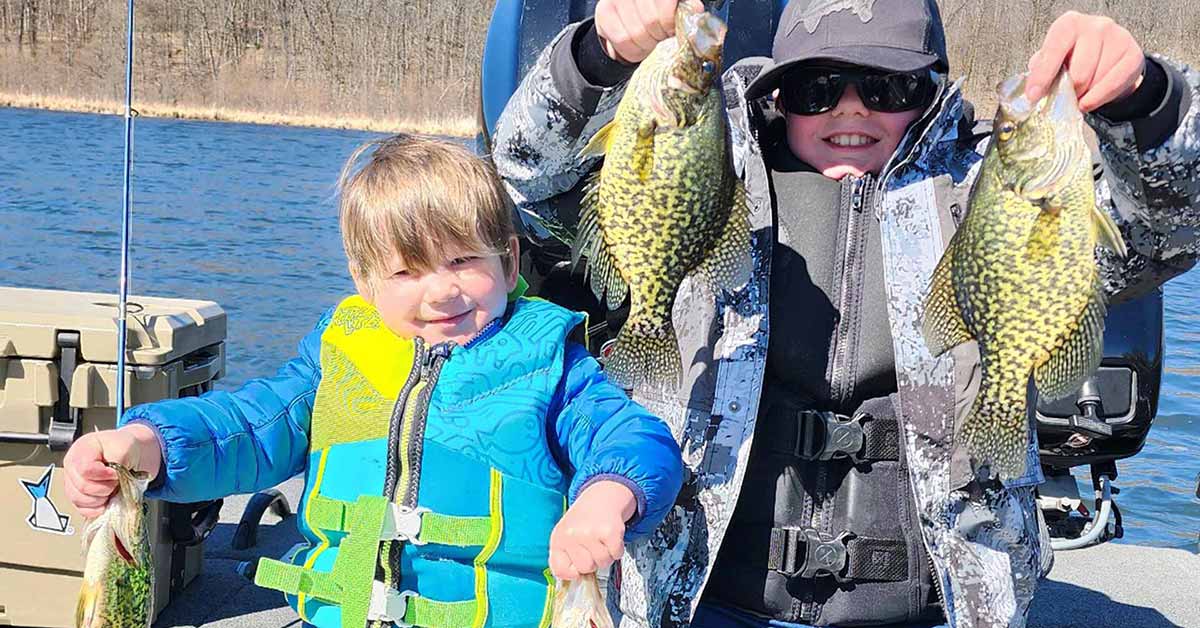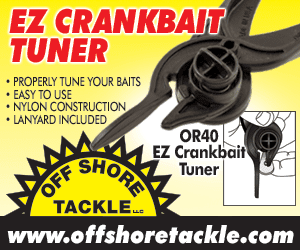For anglers looking for hard fighting and aggressive fish, northern pike in fall is a great option. They are often schooled up and looking to bite big baits!
How to Catch Northern Pike in Fall
Autumn is a magical time in the outdoors. It begins with burst of brilliant fall colors, slowly fading to drab browns. There’s a chill in the air, accompanied by the scent of burning leaves wafting on the breeze. The remarkable stillness is broken only by the occasional humming chainsaw, or the honking of geese winging their way southward. Otherwise, silence reigns supreme. It is also one of my favorite times for big fall pike.
For anglers, fall is trophy time for nearly all fish species, perhaps because fish school so heavily, and feed so aggressively, prior to freeze-up. Lakes and rivers are uncrowded; sometimes, you have nature’s majestic venue all to yourself.
Beneath the water’s surface, giants prowl. Huge northern pike—the biggest in the lake—lie within reach of anglers armed with the right tackle and a grasp of seasonal know-how.
The cooling water draws big fall pike atop prominent mainlake weed flats, where fancasting or longline trolling large tandem spinnerbaits, crankbaits or muskie-sized jerkbaits infuriates them into striking. Water temperatures above 50ºF are prime time for artificials.
As temperatures dip below 50ºF, however, a transition in both fish location and feeding strategy occurs. Big fall pike begin shifting from the tops of weed flats to the deep, outer edges of weedlines abutting open water. The deepest, greenest, lushest remaining stands of healthy cabbage or coontail weeds attract big pike like magnets.
Depending on their feeding attitude and available prey, pike may be slightly within the weeds; perched right along the edge; or suspended slightly outside. If they’re munching on bottom-oriented forage fish like suckers, or perhaps unlucky panfish, small bass or walleyes, pike will tend to be very weed-oriented. If however, the lake offers suspended forage fish like ciscoes, tullibees, smelt or shad, groups of large pike may suspend just outside the weedline, in perfect position to intercept baitfish moving along or into the weededge.
While extended points appear to be—and may in fact be—key places to contact pike, it is instead corners or inside turns along the weededge that collect both forage and pike on a consistent basis. Classic case: the two inside corners at the base of a point, rather than out at the tip. Secretive, misunderstood areas that relatively few anglers fish; but that monstrous pike visit on a regular basis.
Classic case: the two inside corners at the base of a point, rather than out at the tip. Secretive, misunderstood areas that relatively few anglers fish; but that monstrous pike visit on a regular basis.
When water temperatures are below 50ºF, and nomadic pike are roaming the weededge, it’s hard to beat a heavy, ½- to 1-ounce, pointy-nosed, weedless jighead, tipped with a large, 8-inch soft-plastic plastic tail; or, dressed with a 5- to 8-inch live chub, hooked upward through the lower jaw and out the top of the skull. Both are large profiles that entice pike to charge and inhale the bait in a single gulp. You’d best be using a 12-inch wire leader, or you’ll get snipped off and never know how close you came to fame and glory.

Position your boat a half-cast outside the weededge, and quarter your casts ahead of you as you work along the edge with your trolling motor. Direct your casts slightly up into the weeds, allowing the jig to fall and come to rest on the weedgrowth. Then pop the rod tip to snap the jig loose, momentarily sail toward you, and descend again, eventually reaching the outside weedline. As it does, the jig will fall, slowly, downward toward bottom. Get ready. That’s when the big gals usually grab it, and your line and rod tip thump and jump. Set the hook! Immediately thereafter, your rod bends nearly in half, and your drag screams. Fish on.
A 7 ½-foot flippin’ stick, spooled up with 20-pound-test mono or 30-pound braided line, gives you a fighting chance to land the beast. Expect a series of incredibly fast, powerful runs, eventually subsiding to the point where you can slip a net beneath the fish, hoist it topside, snap a quick horizontal photo, and return the fish back into the water to fight another day. See you next year!
Obviously, natural lakes, rivers and reservoirs supporting the largest pike provide the best chance for breaking the elusive 20-pound barrier. Surprisingly unknown and underfished are bays and connected waters of Lakes Superior, Michigan, Huron and Ontario, where cool waters and abundant baitfish grow monster northern pike that move within reach of anglers as Halloween draws near.










